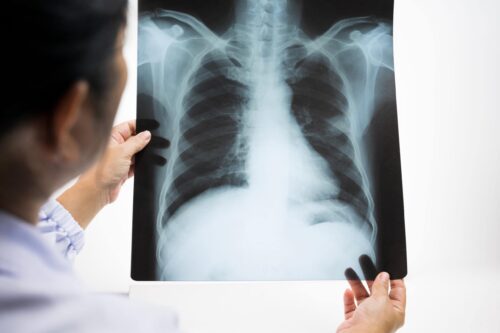Combat Arts Rib Injuries Overview

There are about twelve pairs of ribs in the thorax or chest. They attach to the sternum in the front and the spinal column at the back. Rib injuries are due to blunt or penetrating trauma. These injuries develop after kicks, punches, and jabs to the chest area. Have you heard of the Scorpion rib crush? The floating ribs are a perfect target in an MMA fight.
Ask Leonardo Santos. The Brazilian MMA fighter fractured a rib during a training session at the gym as he prepared to fight. It put him out for a month.
Rib Injury Causes
In BJJ and grappling, the unexpected tackling, the pushing, twisting, lifting, and arching strains the core. Ribs 4 to 10 are most vulnerable to breakage during a fight, while a fracture of ribs one through three is often associated with a violent impact.
Moves that specifically target the ribs are legal in MMA; knees, kicks and punches can injure the rib.
Rib injuries can also be stress injuries that take place over time due to repeated movement. Under each rib lies an artery, vein, and nerve. Injury to the ribs can restrict breathing.
Rib Injury Symptoms

Source: Stefan Holm
Types of Rib Injuries
Younger individuals tend to injure ribs less since the ribs are more elastic. Rib injuries can include chest wall hematomas and contusions. It can also include rib fractures and rib cartilage injuries. A flail chest can result when more than three consecutive ribs are fractured in at least two places.
Related Injuries
Rib Fractures
Rib fractures are common due to the wear on the ribs. Fighters who cut a lot of weight, shed fat between the ribs, exposing the bones to injuries. At a UFC fight night, Anthon Pettis suffered a fractured rib. He lost the match to Dustin Poirier. Poirier had moved to full mount with a body triangle. During the unique move, Pettis suffered an injury, although it was unclear at the time. He’d already had a torn rib cartilage as a teenager so his rib was vulnerable.
Rib Fracture Symptoms

Rib Fracture Causes
If a person gets hit hard or experiences a violent spasm he can cause the rib to pop. If he takes a punch, kick, or a knee aimed at the stomach from a sparring partner it can cause the rib to fracture. Ribs that have previously been fractured or had cartilage broken are more vulnerable to repeat rib fractures.
To learn how rib fractures are diagnosed Click Here.
Common Rib Injuries
Learn more about common rib injuries such as contusions and hematomas in our Common Injuries section.
Rib Injury Diagnosis
Rib fractures must be promptly diagnosed ringside and play halted. They affect respiration and any decompensation can lead to hypoxia and respiratory arrest. Also, fractured ribs can puncture or injure the lungs, the very organs they protect. And, so the lungs, heart, diaphragm, and other structures in the chest must be examined to rule out further internal injuries.
Rib Injuries Are One of the Most Painful and Take the Longest to Recover From
Let Us Teach You How to Manage the Recovery!
Injury Specific Diagnosis
Rib Fractures
Physical Exam
Isolated rib fractures are mostly diagnosed via a clinical exam. After experiencing blunt trauma and pain at the site fighters will have trouble breathing. The clinical exam reviews respiratory ability. The doctor will perform a primary, secondary, and tertiary survey. A physical exam will show bruising along the chest wall, tenderness along the ribs to palpitation.
They will also for crepitus in the chest wall area. Vital signs are monitored for abnormalities such as hypoxia, tachypnea, or significant respiratory distress. Additionally, cardiac exam, the abdominal exam is done to check for cardiac injuries and damage to the kidney, liver, and spleen. Doctors will also check any paradoxical chest wall movement. This is to rule out multiple rib fractures that indicate a flail chest. The examination for a rib fractures is fairly detailed as the injury to thoracic structures such as clavicle, trachea, bronchi, esophagus, and the aorta needs to be considered.
Imaging
Rib fractures are diagnosed clinically. However, to rule out injuries to other thoracic structures, imaging is necessary. Rib X-ray series are done along with Chest X-rays. If multiple fractures are suspected then X-rays are done first but are not very accurate. Point-of-care ultrasonography is more reliable at detecting rib fractures It can also detect rib fractures complications such as pneumothorax and hemothorax. The best test is the Chest CT. It can detect trauma to the internal organs as well.

Lab Tests
Lab tests are not needed to diagnose the rib fracture. However, blood tests are required to detect the oxygenation and if the acid-base balance is being maintained in the blood via ABG test or arterial blood gas along with a complete blood count and a basic metabolic panel. Pulse oximetry is done to assess adequate oxygenation and the need for supplemental oxygenation.
To learn how rib fractures are treated Click Here.
Common Diagnoses
In our Common Diagnoses section we discuss common tests and imaging modalities to diagnose rib injuries.
Rib Injury Treatment
Earlier, fighters would tape themselves following a rib fracture and continue to train and fight. This is frowned upon. The ribs need time to heel. Any sudden tackles or an opponent jumping on top of you could cause the fractured rib to displace and puncture the internal organs. It also delays healing.
Injury Specific Treatment
Rib Fractures
Emergency
All rib fractures are assumed to be trauma cases with ATLS administered right away. Airway with c-spine protection is done and the breathing and ventilation are assessed bilaterally. Pulses are checked to ensure circulation and vitals signs monitored with a cardiac monitor.
Medical
For simple, isolated rib fractures, non-operative management is advised. Pain management, rest, and ice. Intercostal nerve blocks are given if there is severe pain. Rib taping is now forbidden as it impedes inspiratory effort. If conservative management fails or more than 1 rib is fractured rib fractures then surgery is advised. Also, if the rib fracture doesn’t unite, the chest wall has a defect, there is a flail chest or respiratory failure ensues, then surgery is better. Complications such as pneumothorax or hemothorax should be treated managed with the insertion of a chest tube.

Home
An incentive spirometer is encouraged to prevent the collapse of the lungs and splinting. Rib fractures typically six weeks to heal. Cartilage damage takes much longer to heal.
Common Diagnoses
Our Common Treatments section has information about various treatments used to treat rib fractures, rib contusions, and hematomas.

